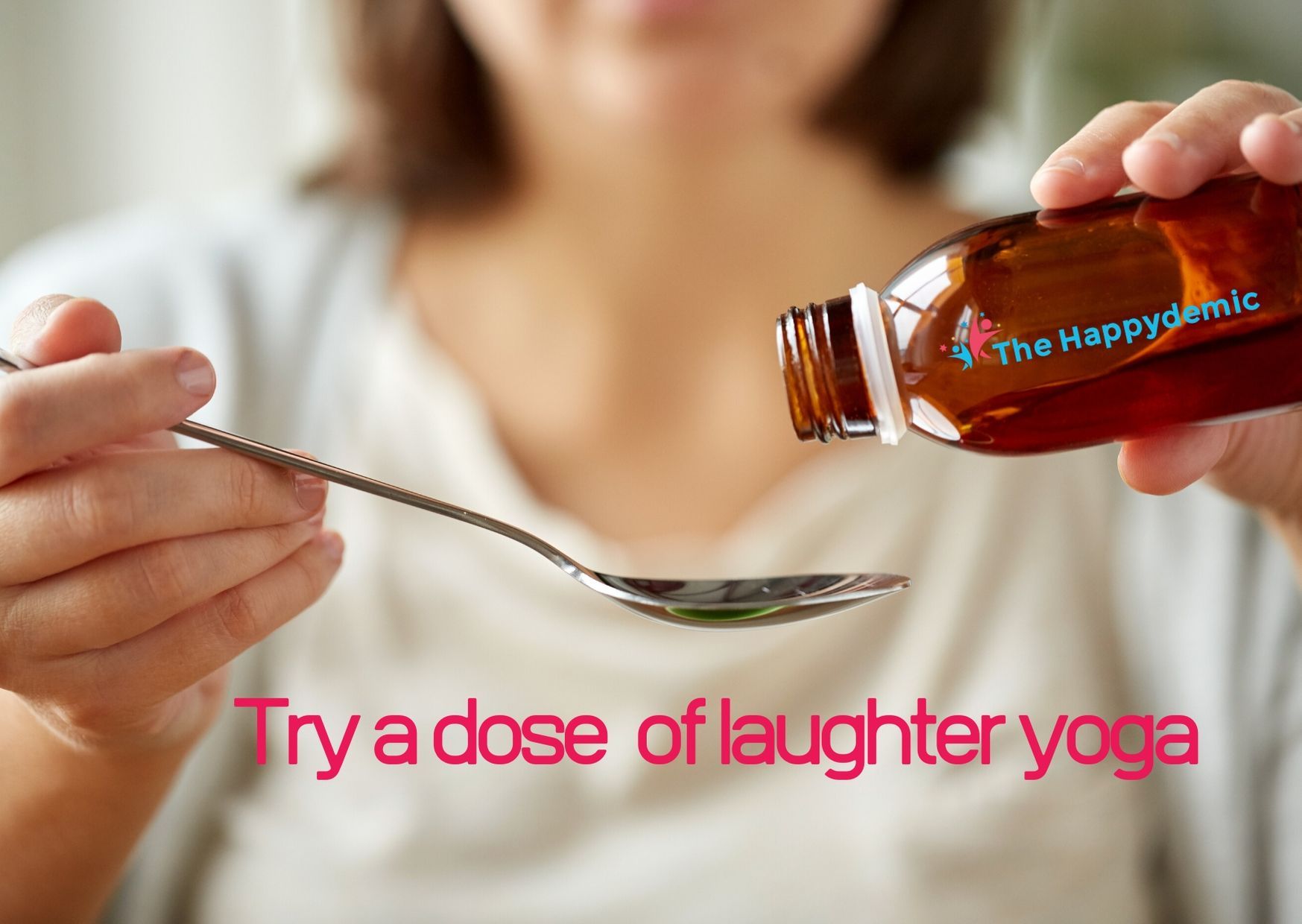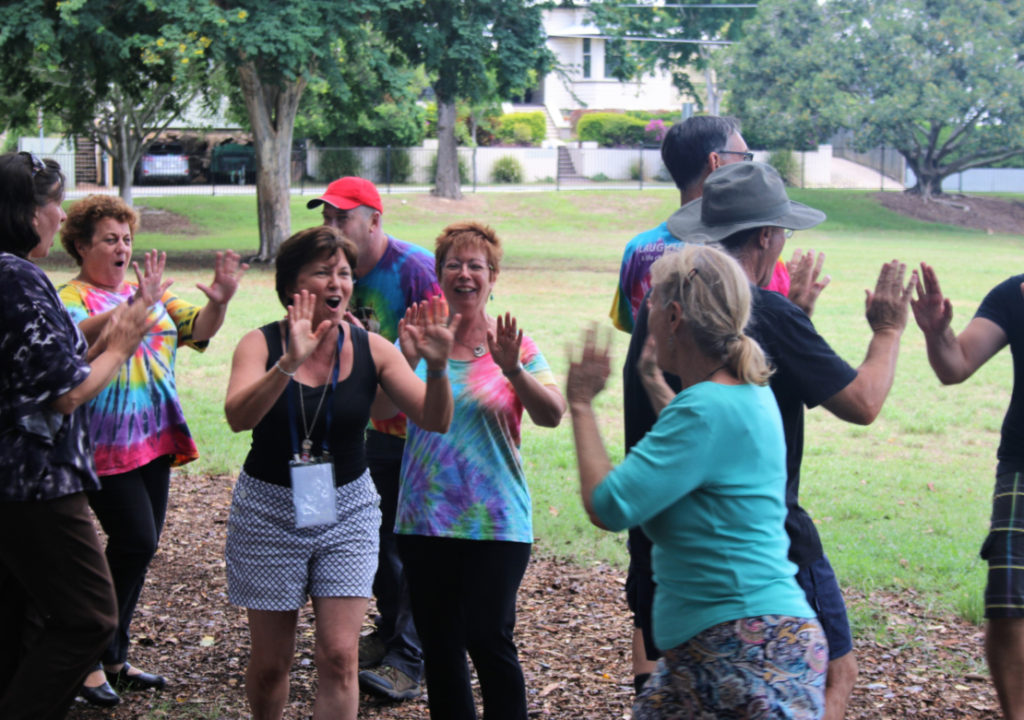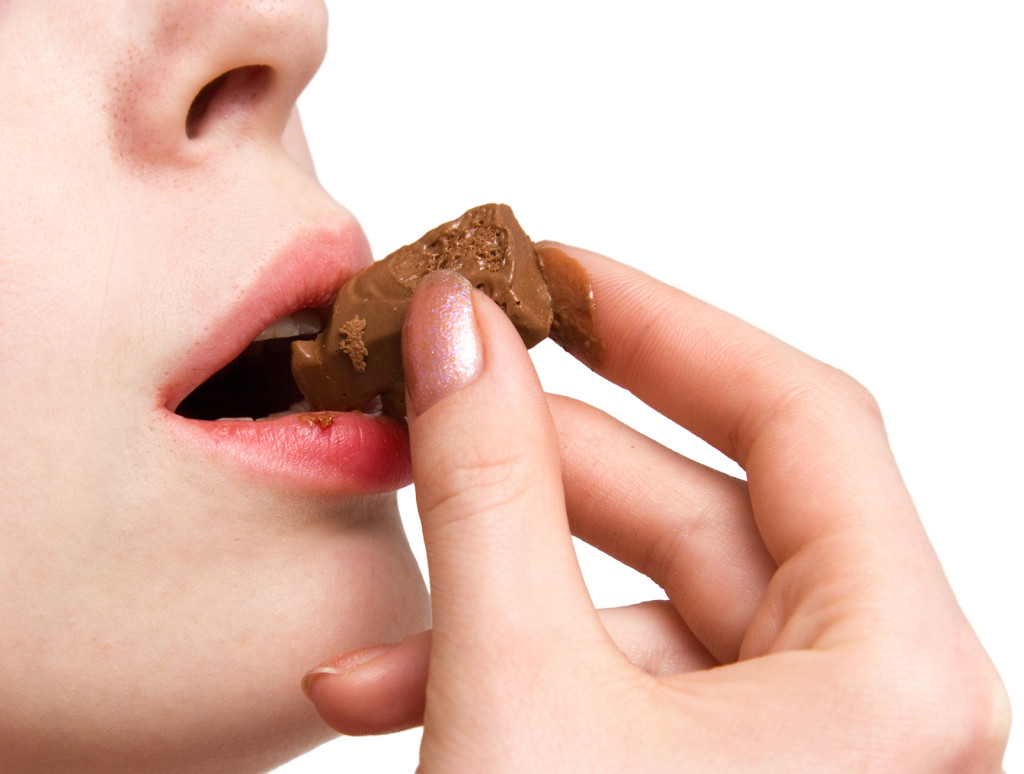
A DOSE of laughter yoga explained
COVID-imposed group limits ease tomorrow in Queensland.
That’s something to smile about. For me, it means our family can (potentially) gather together—there are more than 10 when it’s just the kids, their partners, Dear Heart and me. Laughter clubs—the social community service some of us trained laughter yoga facilitators provide—can gather again too. Happy days indeed.
Are you up for your DOSE of laughter wellbeing?
Perhaps you are wondering what a DOSE even is…
What is laughter yoga?
Laughter yoga is a fun, mindful exercise program that’s gently aerobic and adaptable for all ages and abilities.
Laughter yoga intersperses deep slow diaphragmatic breaths with a combination of clapping, gentle stretches, playful exercises and laughter—simulated at first—in a group situation.

There’s no need for jokes or comedy. You don’t even need to be in the mood (although you’re likely to soon find yourself laughing freely).
In laughter yoga, we sustain laughter much longer than a social giggle or titter. And it’s absolutely safe to laugh out loud (in fact, it’s expected). Why? Laughter’s exhalation helps expel significantly more stale old air from our lungs, enabling us to naturally flush our system with more oxygen-rich air.
We also feed off one another in terms of eye contact and the sound of another’s laughter. Just as we’re hardwired to smile when someone smiles at us, it’s really hard not to laugh when those around you are.
A laughter club session in a park will go for about 40 minutes, finishing with a short guided meditation to cap all those feel-good hormones released in your body during the work-out (or should that be laugh-out?).
What are the feel-good chemicals released when laughing?
Those feel-goods are what I refer to as a DOSE. They are Dopamine, Oxytocin, Serotonin and Endorphins. Let’s unpack what they do briefly.
Dopamine is like the gold star of the body’s reward system.

When you’re doing something pleasurable, your brain will help you want more by releasing Dopamine. (That’s why lab rats keep hitting the lever for food, over and over again. Blame Dopamine when you can’t say no to that second slice of wickedly wonderful chocolate cake.) Dopamine causes us to want or desire; to seek out and search. It’s a motivator, increasing our general level of arousal or curiosity as cognitive neuroscientist Scott Weems explains in Ha! The Science of When We Laugh and Why. As Weems explains, it’s through Dopamine’s release that laughter helps us process conflict in our environment.
Oxytocin is most commonly known for its bonding power between mother and baby, released during labour and when breastfeeding. Thankfully, Oxytocin’s presence is not restricted to those times. It’s been labelled the ‘cuddle hormone’ because the brain releases it when people snuggle close. Relax: you don’t even need to get that intimate. A smile can start the social bond too. Behavioural neuroscientist Larry Young explains Oxytocin as making social information “more salient”. “It connects brain areas involved in processing social information – whether it’s sight, sounds or smells – and helps links those areas to the brain’s reward system,” he says.
While Serotonin impacts every part of the body—from bowel movements to blood clotting—it’s mostly recognised for its part in the regulation of mood. Low levels of serotonin have been associated with depression. Its presence helps regulate anxiety too. Serotonin helps you feel:
- calmer
- more focused
- happier
- more emotionally stable.
While SSRIs (selective serotonin reuptake inhibitors) are the most prescribed anti-depressant in Australia, there are natural ways to boost your serotonin. These include:
- sunshine
- regular exercise
- mediation
- laughter yoga.
The laughter wellbeing DOSE is completed with the release of Endorphins. These are your body’s own painkiller, opioid-like, producing a sense of euphoria and no pain. I feel it after a hard gym work-out or a long swim; I feel it after laughter yoga.
Endorphins also help reinforce social attachments.
In promoting an overall sense of wellbeing, Endorphins also help:
- reduce stress
- alleviate depression
- boost self-esteem.

Eating dark chocolate, volunteering, dancing, sex and laughter are just some of the ways to get this natural high flowing. Right now, I’ll stick with laughter!
Brought together, a laughter yoga session will deliver you with a DOSE of joyfulness.
Be warned: laughter yoga is highly contagious… Then again, the world is in need of a happydemic. Are you ready to be part of it, in person or online?
(C) 2020 HeatherJoy Campbell
HeatherJoy Campbell is Queensland’s leading professional laughter wellbeing facilitator and trainer, using the platform of laughter yoga to deliver wellness sessions to communities, workplaces and aged care centres, in person and online. Brisbane-based, she has certification to train others as laughter yoga leaders and has been appointed a global ambassador for Laughter Yoga International. HeatherJoy runs The Gap Laughter Club.